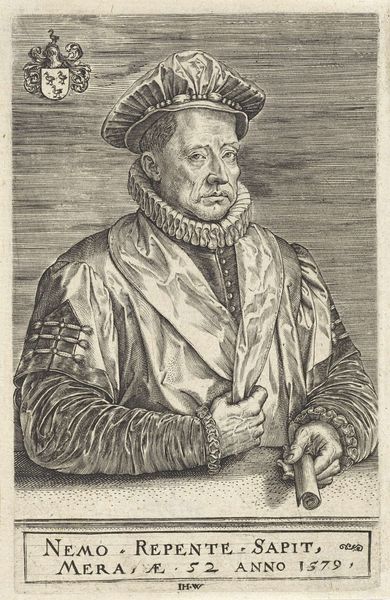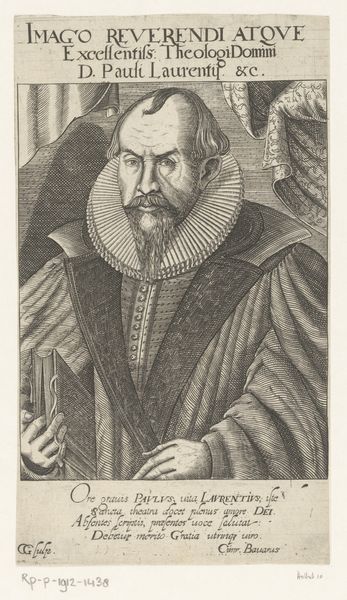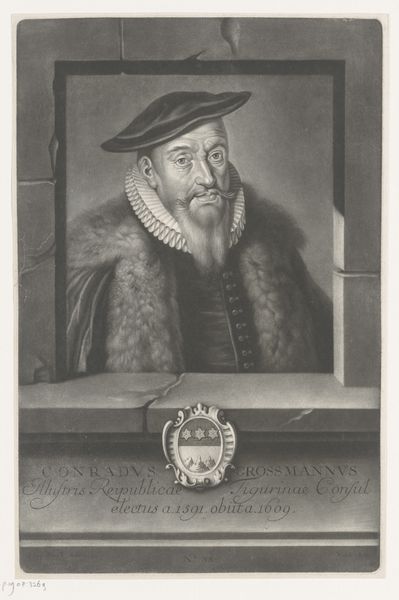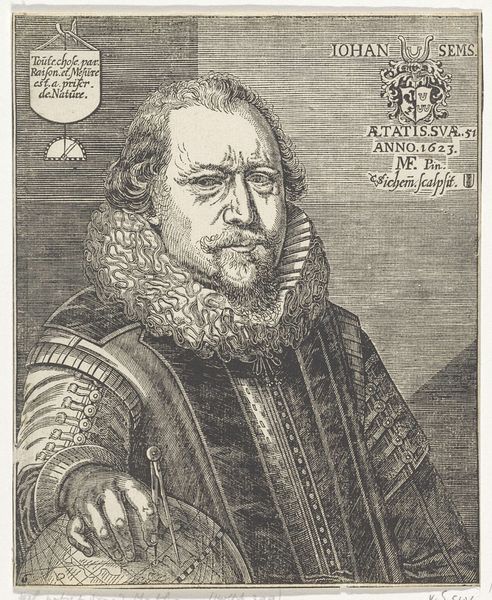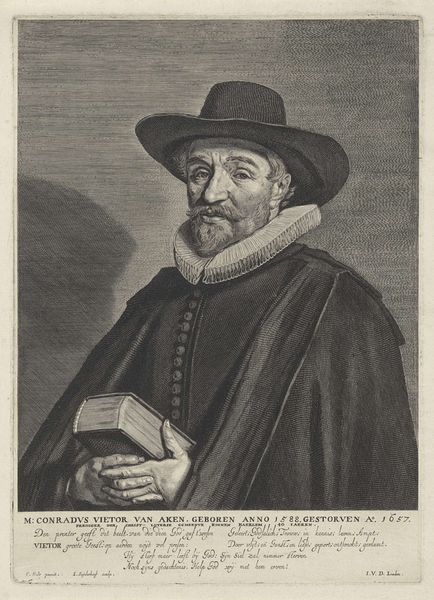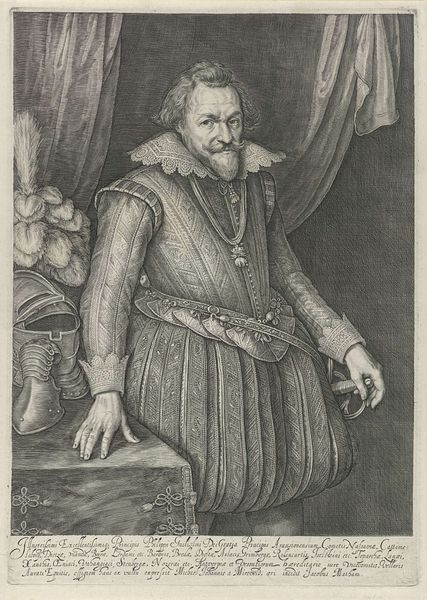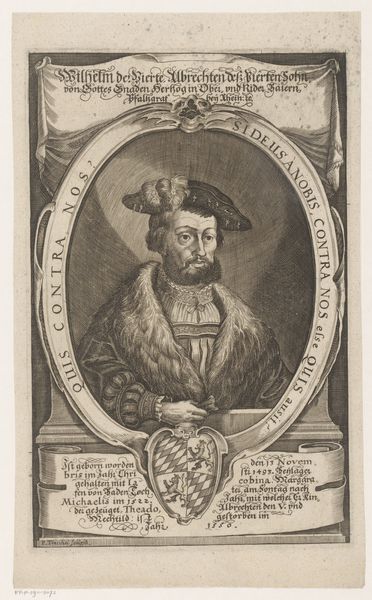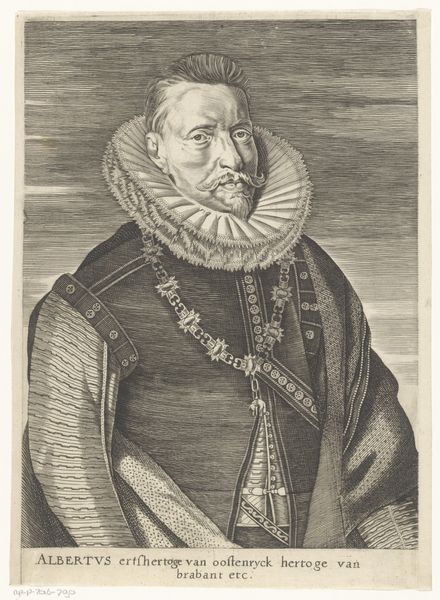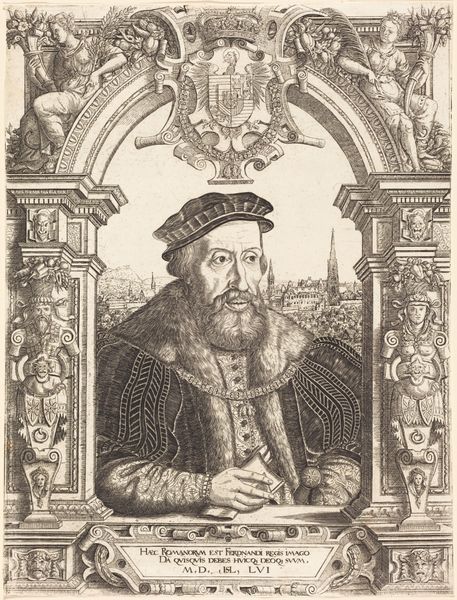
Portret van een man met bontkraag en pet, met het familiewapen van Van Slingelandt Possibly 1751 - 1753
0:00
0:00
drawing, pen
#
portrait
#
drawing
#
pen
#
portrait drawing
#
history-painting
#
academic-art
Dimensions: height 225 mm, width 177 mm
Copyright: Rijks Museum: Open Domain
Curator: Here we see "Portrait of a Man with a Fur Collar and Cap, with the Family Coat of Arms of Van Slingelandt" a drawing potentially created between 1751 and 1753 by Aert Schouman, held here at the Rijksmuseum. Look at how present he appears, even after centuries! Editor: There's an undeniable air of severity in his gaze, almost as if he's silently judging the viewer. The meticulous detail given to his opulent fur collar versus the stark background really makes him pop. It speaks volumes about wealth and status. Curator: The fur is indeed a central symbol. It speaks to power, position, and perhaps even moral virtues tied to the family name he carries, doesn't it? Editor: It does, but that conspicuous display of wealth begs questions: Who did that fur represent to the masses? And who suffered in its acquisition? Curator: True, clothing, in that period was more than just a material object; it was part of a language spoken among classes. Note the inscription above his head on the left, alongside the suspended heraldic crest to the right of his head, clearly placing him within the elite circles of his time. Editor: Absolutely, the symbolism is overt. What's especially compelling, though, is how Schouman situates his subject within very particular lineage narratives—a conscious act of reinforcing social structures. The family’s legacy is being carefully curated, as much as he himself is within this portrait. Curator: But that is the point of family crests, and lineage depictions in portraits. It’s about collective memory, shared identity passed down through generations; and, from a psychological point of view, the figure’s assertive gaze acts almost as an appeal to those timeless ideals of the family itself, no? Editor: It may very well be. To look at art such as this drawing offers ways to explore the impact legacy, symbolism, and wealth have across generations in contemporary society too. Curator: For me, I see the endurance of symbols and visual representations across time. Even in our digital age, we still search for meaningful images to communicate complex ideas about ourselves, our communities, and our lineage. Editor: That's precisely where art and activism intersect; it shows the relevance of questioning the narratives presented, while staying informed, historically, through their creation and continued consumption.
Comments
No comments
Be the first to comment and join the conversation on the ultimate creative platform.
